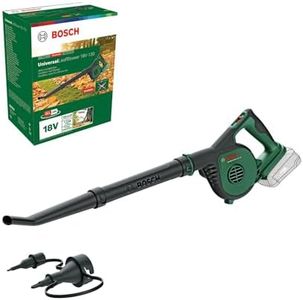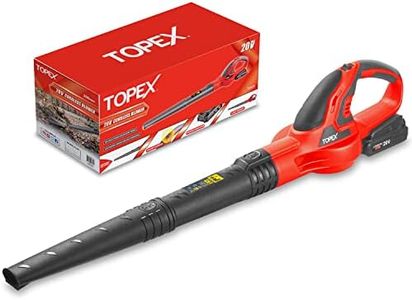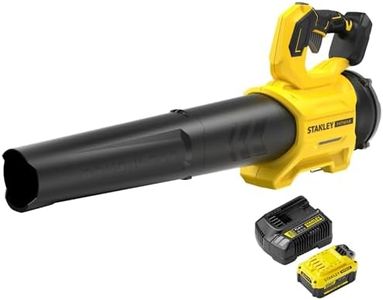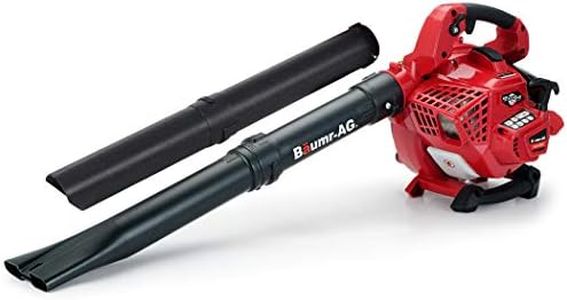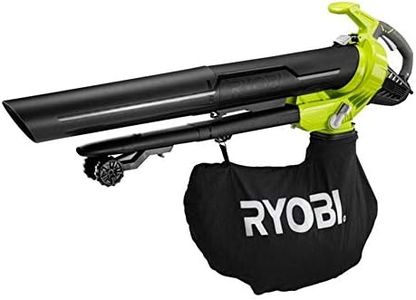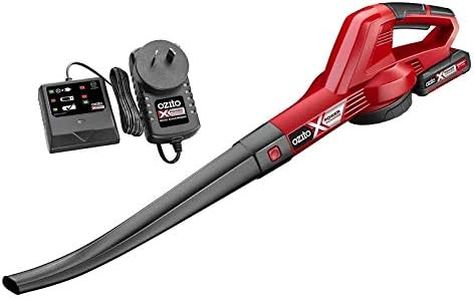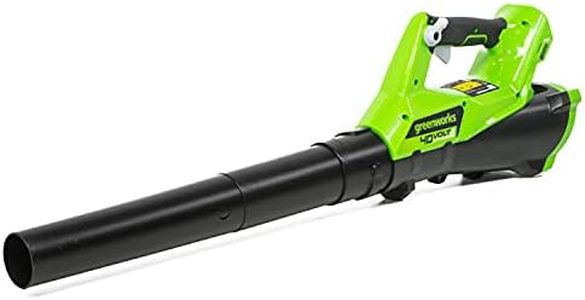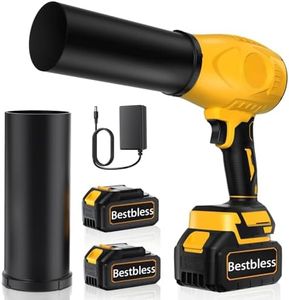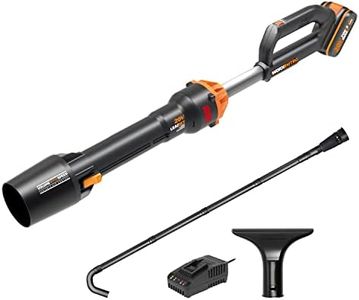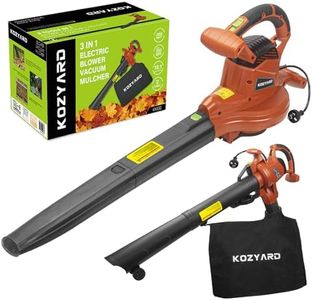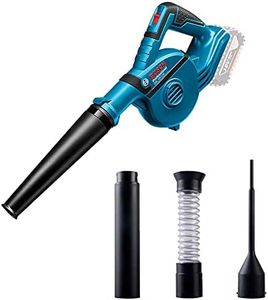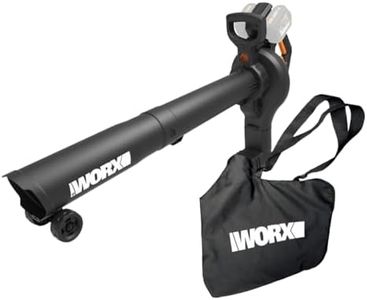We Use CookiesWe use cookies to enhance the security, performance,
functionality and for analytical and promotional activities. By continuing to browse this site you
are agreeing to our privacy policy
10 Best Blower Vacs
From leading brands and best sellers available on the web.Buying Guide for the Best Blower Vacs
Choosing the right blower-vac can make yard work much easier and more efficient. With so many options on the market, it helps to understand your own needs: consider how big your yard is, how often you’ll use the tool, and whether you’ll mainly blow leaves, vacuum debris, or both. Pay attention to features and specifications that can affect comfort, performance, and ease of use. Picking a blower-vac that matches your requirements helps you get the job done faster and with less effort.Power SourceThe power source refers to whether the blower-vac is powered by gas, electricity (corded), or battery (cordless). Gas-powered models typically offer the most power and are suitable for large yards or heavy-duty cleanups, but they are louder, heavier, and need more maintenance. Corded electric models are lighter and quieter, and don’t need fueling, but the cord can limit your reach. Cordless battery models give you mobility and low maintenance, though they usually run for limited periods between charges. Choose based on your yard size, proximity to power outlets, and whether you’d prefer less weight or more power.
Air Speed (MPH)Air speed, measured in miles per hour (MPH), shows how quickly air is blown out of the nozzle. Higher speeds help move heavier or raked-in debris. Basic models might offer 100-150 MPH, suitable for light leaf blowing; mid-range models could have 150-200 MPH, useful for most residential needs; and heavy-duty ones go above 200 MPH, tackling wet leaves and heavier debris. If you mainly need to clear dry leaves from hard surfaces, moderate speeds work well. For stubborn, heavy yard debris or wet leaves, look for higher air speeds.
Air Volume (CFM)Air volume, measured in cubic feet per minute (CFM), tells you how much air the blower-vac moves. Think of it as the width of the air stream—the higher the CFM, the more debris you can move at once. Low CFM (under 200) is useful for small areas; 200-400 CFM fits most home gardens and moderate debris; and 400+ CFM suits big yards or substantial cleanup jobs. If you need to clear large piles, focus on a higher CFM for efficiency.
WeightWeight affects how comfortable the blower-vac is to use for long periods. Lightweight models (under 7 pounds) suit quick jobs or users who may have difficulty lifting heavier tools. Medium weight (7-10 pounds) works well for general use, balancing power and comfort. Heavier units (over 10 pounds) may be best for short, powerful bursts or tackling larger jobs, especially if they have a shoulder strap. If you’ll be using the tool for a long time or have limited strength, prioritize lighter, ergonomic designs.
Noise LevelNoise level is measured in decibels (dB) and indicates how loud the blower-vac will be during use. Quieter electric models are about 60-65 dB, suitable for noise-sensitive areas; moderate machines are around 70-75 dB; while gas models can exceed 80 dB, which may disturb neighbors or require hearing protection. If you live in a quiet neighborhood or plan to use the blower-vac for long stretches, choosing a quieter model will be more comfortable for everyone.
Vacuum and Mulching CapabilityMany blower-vacs can also vacuum and mulch leaves, reducing the volume of yard debris by chopping it up. Mulching ratios (such as 10:1 or 16:1) show how much the debris is reduced. A higher ratio means fewer bags to dispose of and less time spent on cleanup. If you want a tool that not only blows but also collects and mulches leaves for compost or easier disposal, look for blower-vacs with strong mulching performance and easy-switch features.
Ergonomics and Ease of UseGood ergonomics refers to how comfortable and simple the blower-vac is to control. Features like padded handles, adjustable tubes, and balanced design reduce fatigue. If you have a large area or anticipate long sessions, prioritize models that offer good grip and customizable settings, so you can work more comfortably for longer periods.

